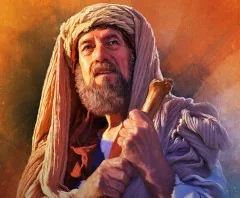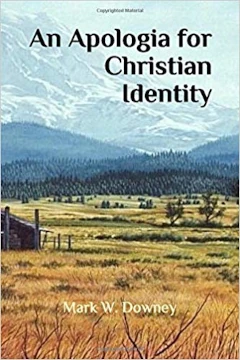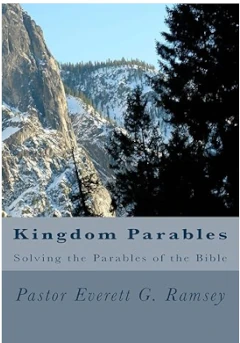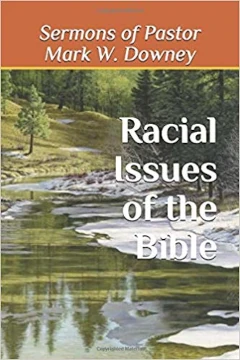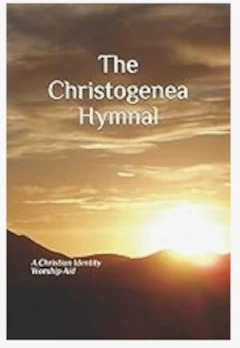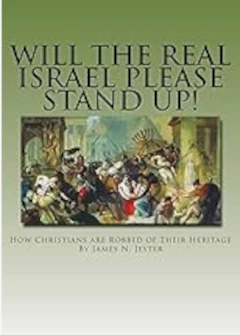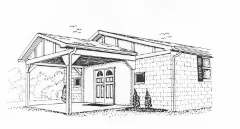Of Fishers and Hunters
by James N. Jester
December 29, 2019
Scripture Reading: Jeremiah 16:14-18
“Behold, the days come, says Jehovah, that it shall no more be said, As Jehovah lives, who brought up the sons of Israel out of the land of Egypt; but, As Jehovah lives, who brought up the sons of Israel from the land of the north, and from all the lands where He had driven them. And I will bring them again into their lands that I gave to their fathers. Behold, I will send for many fishermen, says Jehovah, and they will fish them. And afterwards, I will send for many hunters, and they will hunt them from every mountain and from every hill, and out of the holes of the rocks. For My eyes are on all their ways; they are not hidden from My face, nor is their iniquity hidden from My eyes. And first I will twice repay their iniquity and their sin, because they have defiled My land, they have filled My inheritance with the dead bodies of their abominable things.” – MKJV
Introduction
This could be considered a follow-up sermon on the recent series I did on Israelite migrations.
Ah, fishing and hunting, two very popular sports diversions to help the working man or woman escape the stresses of everyday life. They are also good survival skills too. Fishing is the easiest, but hunting sometimes can be a little more difficult. We can also see this difficulty in relation to the captivity of Israel, which of course, precipitated the dispersion of Israel and Judah throughout Asia and Europe.
In my previous series of sermons, we traced much history about the migrations of Israel. The armies of Tiglath-Pileser III, Shalmaneser V, Sargon II, Esarhaddon, Sennacherib, and Nebuchadnezzar, found that their attack upon Israel was sometimes easy, much as a fishing net would easily capture large amounts of fish. On the other hand, there were times when the invader, as a hunter after his prey, would have to seek out those people who had hidden from him in the mountains and caves or other places.
Scripture Exposition
In our Scripture reading, we have a prophecy of the restoration of Israel. This of course, is a future event we all look forward to and work toward in the kingdom of God.
This passage has double meanings, as prophetic passages sometimes do.
Concerning Jeremiah 16:14-21, Matthew Henry says: “There is a mixture of mercy and judgment in these verses, and it is hard to know which to apply some of the passages here – they are so interwoven, and some seem to look as far forward as the times of the gospel.”
So, while this passage parallels the historic record of the invasion and captivity of Israel, it also points to a time of the restoration of Israel as a kingdom in the future.
The figure of the fishers and hunters are used in both events: 1) the invasion and captivity of Israel, which resulted in their relocation; and 2) the regathering of Israel and the restoration of the kingdom.
“The two figures signify various kinds of treatment at the hands of enemies. The fishers represent the enemies that gather the inhabitants of the land as in a net, and carry them wholesale into captivity (cf. Amo 4:2; Hab 1:15). The hunters, again, are those who drive out from their hiding places, and slay or carry captive such as have escaped from the cities, and have taken refuge in the mountains and ravines (cf. Jer 4:29, Jdg 6:2). In this, the idea is visibly set forth that none shall escape the enemy.” – Keil & Delitzsch
The verses as referenced above:
Amos 4:2, “The Lord Jehovah has sworn by His holiness that the days shall come on you that He will lift you up with meat hooks, and your sons with fishhooks.” – MKJV
Habakkuk 1:15, “The adversary captures them with a hook, gathering them up in a fishing net. He collects them with a dragnet, rejoicing and gloating over his catch.” – ISV
Jeremiah 4:29, “The whole city shall flee for the noise of the horsemen and bowmen; they shall go into thickets, and climb up upon the rocks: every city shall be forsaken, and not a man dwell therein.”
Judges 6:2, “And the hand of Midian was strong against Israel. Before the faces of Midian, the sons of Israel made themselves dens in the mountains, and caves and strongholds.” – MKJV
Verse 18, referring to paying “twice” (or double) for her sins, is a figure of speech meaning “paid in full” (or “paid completely”); a figure found in other Scriptures. Kimchi suggests, “Double here means the two captivities and emigrations suffered by the Israelites. The first, the Babylonish captivity; the second, that which they now endure.” The JFB Commentary says, “The ‘double for her sins’ must refer to the twofold captivity, the Assyrian and the Roman… It does not mean double as much as she deserved, but ample punishment in her twofold captivity.”
In summary of this passage (from Preacher’s Homiletical):
Imagery of invading captors.
“Fishers” express the ease with which these invaders would capture the prey. The Northern armies would secure them with as little difficulty or trouble as anglers gather fishes within their trawl-nets. “Hunters” express the keenness and resoluteness with which these Northern invaders [because of the desert, the armies chose to avoid it] would pursue their prey; neglecting no hiding-place, penetrating into every retreat, and allowing small hope of escape.
Imagery of redeeming agencies.
1. Of the recovery of scattered Israel from the lands of the spoiler…. The figure of fishing is so used by Ezekiel (47:9-10). And surely in Israel’s restoration they will be graciously hunted wherever they have been driven, and brought back from heights and valleys, and even repelling “holes of the rocks.” For God’s “eyes are upon all their ways” (Jer 16:17) in their dispersion.
2. Of the capture of souls for Christ. “I will make you fishers of men.”
-
- Gentle attractions of the Gospel. Easily drawing souls into the kingdom.
- Manifold yet adapted truths of Scripture, winning men individually into conviction and faith. The precious promises, words of sacred comfort, convincing truths, inspiring teaching of God’s Word capture souls, and “sweetly force them in” to the enclosure of Divine assurances.
- The Holy Spirit’s work, of awakening souls to their state and need of witness in consciences and hearts, and of revealing Christ and the Gospel to men.
- Wise ministrations of Gospel messengers. Preachers and teachers so present Christ’s truth, so contend with hearers’ doubts and hesitancy to “persuade men” that, being wise, they “win souls” and so draw sinners and weary lives to the Savior. [end quote] – Preacher’s Homiletical
3. Of the restoration of the kingdom. From all lands shall they come, “as life from the dead” (Rom. 11:15). See also Ezekiel’s (chapter 37) vision of, “The Valley of Dry Bones” and parable of “The Two Sticks”.
“And they shall come from the east, and from the west, and from the north, and from the south, and shall sit down in the kingdom of God.” – Luke 13:29
“Therefore, behold… I will cause them to know mine hand and my might; and they shall know that my name is The LORD [should be “Yahweh” because “Lord” is not a name, but a title]. – Jer. 16:21
Praise Yahweh, we are near that time!
Who Are the Hunters?
By Clifton A. Emahiser [Abridged from Christogenea.org]
Did you know while the Holy Bible speaks of “fishers” it also speaks of “hunters” in the very same verse?
Jeremiah 16:16: “Behold I will send for many fishers [the Gospel period], saith Yahweh, and they shall fish them; and after will I send for many hunters [the Last Days period], and they shall hunt them from every mountain, and from every hill, and out of the holes of the rocks.”
…The pastors are seemingly very quick and prepared to expound that Christ, when He called his disciples, had stated to them in Matthew 4:19, “Follow me and I will make you fishers of men.”
Whenever a pastor has quoted this passage, has he ever made reference to Jeremiah 16:16 and expounded on the relationship of the two verses? If he hasn’t, it would seem quite strange, for The New Treasury of Scripture Knowledge, edited by Jerome H. Smith (a special book of cross-references) takes you to this verse. If then, the calling by Christ (Yahshua) of His disciples was the fulfillment of Jeremiah 16:16, just when is the fulfillment of the “hunters” supposed to take place? Have the pastors ever addressed the question of the “hunters”? If the calling of the “fishers” is all that important, it would seem the calling of the “hunters” would be equally significant.
…With a little ingenuity on your own part, you can figure who these “hunters” might be, and just what they are to be hunting for. Remember that Jeremiah 16:16 said, “out of the holes of the rocks?” Who in the world would go “hunting” in “the holes of the rocks”? Do you suppose it is talking about archaeologists as being these “hunters”? If so, who would be the “them”, for whom these archaeologists would be looking? …Do you suppose the “hunters” were to hunt for the same people the “fishers” were to fish for? Maybe, if one were to read the rest of Jeremiah chapter 16, one might find who these people are, to whom Jeremiah referred.
If the archaeologists are the “hunters” in question, they have been quite busy! […List nearly 4 pages long… I was not aware of all this activity!]
In 1717, the Society of Antiquaries was set up in London. It received a royal charter in 1751 and issued its first Archeologia in 1770. In 1798, Napoleon Bonaparte occupied Egypt, which resulted partially in archaeological investigation. In 1799, the Rosetta Stone (a trilingual inscription) was found which provided the key to unlocking Egyptian hieroglyphics. In 1805, Ulrich Jasper Seetzen discovered Caesarea Philippi, Ammon and Gerasa. In 1811, C. S. Rich, the first British consul at Baghdad, excavated and partially mapped the ruins of Babylon.
In 1812, Johan Ludwig Burckhardt discovered Petra. In 1815, Lady Hester Stanhope made an attempt to unearth statuary at Ashkelon. In 1817, Giovanni Battista Belzoni began the search of tombs and temples of the pharaohs. In 1821-2, Jean Francois Champollion finally broke the code of the Rosetta Stone. In 1833, Sir Henry Creswicke Rawlinson went to Persia as a young officer to organize the Shah’s army; became interested in cuneiform; deciphered and later published the trilingual inscriptions of Darius I on the Behistun.
In 1838, Edward Robinson and Eli Smith traveled throughout Palestine identifying and describing Biblical cities. In 1842, Paul Emile Botta began investigation of the mound of Kuyunjik, discovered Khorsabad and the palace of Sargon II, which opened the way to Assyriology. In 1845, Sir Austen Henry Layard began excavations at Nimrud, discovering the palaces of Ashurnasirpal, Shalmaneser II, finding the famous Black Obelisk and later making other important discoveries.
In 1848, F. de Saulcy cleared a site at Jerusalem. In 1849, Karl Richard Lepsius published the results of Prussian expeditions to Egypt. In 1850 Auguste Ferdinand Francois Mariette began investigating Egypt. In 30 years he excavated and found 15,000 monuments from Memphis to Karnak in 37 sites. In 1850, W. K. Loftus succeeded Rassam at Nineveh, visited Erech and other sites in the Euphrates. In 1859 Konstantin von Tischendorf discovered the Codex Sinaiticus.
In 1863, J. T. Wood explored Ephesus for the British Museum and came upon the temple Artemis. In 1864, Giovanni Battista De Rosse began study of the Roman catacombs. In 1865 the foundation of the Palestine Exploration Fund promoted archeological research in, and later publication of, Jerusalem and western Palestine. In 1867, Charles Warren, a British artillery officer, was financed by the fund to investigate Jerusalem.
In 1870, Charles Clermont-Ganneau came to the French consular service in Palestine, later sent the Mesha Stele to the Louvre; discovered the famous notice prohibiting aliens from intrusion into the Temple Court and identified the site of Gezer. This same year, the American Palestine Exploration Society was founded. Also, Heinrich Schliemann discovered Troy, and, with his successor Dörpfeld, first understood the importance of a tell. In 1872, the Palestine Exploration Fund sent a party to Palestine to make an inch-to-mile survey of Western Palestine, headed by Claude Regnier Conder and Horatio Herbert Kitchener. This survey was indispensable, basic work for later archeologists and geographers.
In 1873, The Daily Telegraph financed an expedition and George Smith began work at Nimrud; later to Kuyunjik. In 1877, Ernest de Sarzec worked Lagash, finding statues of early governors and the Victory Stele of Eannatum, awakening the world to Sumerian archaeology.
In 1878, Rassam resumed work for the British Museum at Nineveh finding a haul of tablets, a clay prism and accounts of the campaigns of Sennacherib. In 1879, Hormuzd Rassam investigated the ruins of Babylon. In 1881, Sir Gaston Camille Charles Maspero discovered many royal sarcophagi at Deir-el-Bahri and continued clearing work on the temple of Karnak, later publishing his findings.
In 1882, Elouard Naville investigated Egypt. This year also saw W. Dörpfeld join Schliemann at Troy. In 1884, M. Dieulafoy continued excavations of the royal buildings of Susa. In 1887, a peasant woman, grubbing for compost in the ruins of Akhenaton’s town at Tell el-Amarna unearthed the priceless Tell el-Amarna Letters. In 1888, John P. Peters, directing an American dig along with Haynes and Hilprecht, discovered 20,000 tablets at Nippur. In 1890, Flinders Petrie spent six weeks on the mound of Tell-el-Hesi, in southwest Palestine. He succeeded in setting a standard in the principles of stratigraphy and the utilization of pottery to establish dating.
In 1894, Sir Arthur Evans began work in Crete probing the Minoan civilization. In 1895, Bernard Pyne Grenfell, with colleague A. S. Hunt, began searching for Greek papyri, developing the science of papyrology. In 1895, Sir William Mitchell Ramsey, Professor of Humanity at Aberdeen, did archaeological work in Asia Minor and established the reputation of Luke as a true historian. In 1896, G. M. Legrain initiated work at Karnak temple. In 1897, J. de Morgan saw work at Susa. In 1898, M. Loret discovered the tomb of Amenhotep II in the Valley of the Kings. 1899 saw Robert Koldewey at Babylon. 1900 saw George L. Robinson at Petra. 1901 saw Gaston Cros at Telloh (Lagash). 1902 saw R. A. S. Macalister begin his excavation of Gezer, which lasted seven years, and, also, Ernst Sellin begin a three-year survey of Tell Taanach. In 1903, G. Schumacher, trained by Sellin, oversaw investigation of Megiddo, the well-known Jeroboam seal being discovered.
1904 saw David G. Hogarth at Ephesus. In 1905, James Henry Breasted contributed his Ancient Records of Egypt and 2nd ed., History of Egypt, showing striking advances in Egyptology. 1906 found Hugo Winkler working at Boghazkoy, a Hittite site. 1907 saw Herman Thiersch, Herman Kohl, Carl Watzinger and Ernst Sellin surveying the synagogue of Galilee, with Watzinger and Sellin overseeing a dig at Jericho.
1908 saw D. G. Lyon, C. S. Fisher and G. A. Reisner at Samaria. 1909 saw
Duncan Mackenzie at Bethshemesh. 1910 saw Howard C. Butler at Sardis. In 1913, Watzinger and Sellin investigated Shechem. 1917 saw The Palestine Department of Antiquities founded, headed by John Garstang. 1919, with WW I over, saw Albright, Woolley, Fisher, R. L. Hall, Wace, Montet, and Dunand at various digs. 1922 saw Albright working at Gibeah, Howard Carter discovering Tutankhamen’s tomb in the Valley of the Kings, A. Schmidt and H. Kaer working at Shiloh and Sir Charles Leonard Woolley digging at Ur.
1923 saw W. J. Phythian-Adams and John Garstang at Ashkelon. 1924 saw David M. Robinson on the Pisidian Antioch. 1925 saw Dr. Edward Chiera at Nuzi discovering the Patriarchs were true historical people. 1926 saw W. F. Badè at the Biblical Mizpah. In 1928, Elihu Grant began a series of five campaigns at Beth-Shemesh. 1929 saw Dorothy Garrod investigating Palestinian caves. 1930 saw Theodore D. McCown with C. S. Fisher continue work at Gerasa, G. L. Robinson discovering Petra’s “high place” and John Garstang working at Jericho.
In 1931, Ernst Herzfeld was at work at Persepolis and A. Maiui at Pompeii and Herculaneum. O. R. Sellers with W. F. Albright was working at Bethzur. Also, J. W. Crowfoot continued the project at Samaria where Reisner left off. Then M. E. L. Mallowan appeared on the scene with work at Nineveh. In 1932, G. E. Ederkin explored the site of Syrian Antioch. J. L. Starkey began a dig at Lachish. R. W. Hamilton investigated a site at the foot of Carmel.
In 1933, Roman Ghirshman began work at Tepe Siyalk. P. Dikaias was working at Cyprus, Charles Morey continued work at Syrian Antioch, aided by Richard Stillwell. In 1934, excavations at Bethel were conducted by J. L. Kelso and W. F. Albright. 1935 saw J. P. Black working at Samaria, Erich Schmidt at Persepolis, and Gordon Loud at Megiddo. 1937 saw Nelson Glueck excavating a cemetery at Jebel-et-Tannur. In 1938, J. L. Starkey was murdered while Lankaster Harding and Charles H. Inge continued briefly at Lachish.
1947 brought to light the Dead Sea Scrolls, of which, W. F. Albright later commented. In 1948, Robert Braidwood worked at Qalat Jarmo, in NE Iraq. 1950 saw William Morton at Dibon in Moab. 1953 saw Joseph P. Free at Dothan. 1954 saw Kurt Bittel at Boghazkoy investigating the Hittite Empire, Zakarie Goneiun busy at Saqqara, Richard Haines at Nippur, Philip Hammond at Petra, Kamal el Mallakh at Giza and Jean Perrot at Tell Abu Matar, near Beersheba, etc.
What did these Hunters find?
While all of these archaeologists found many things verifying Biblical places, times and events, probably the most important of these were the cuneiform clay tablets found in the excavations of the Assyrian royal library at Nineveh. It might appear today, after a lapse of 2500 years, all hope of tracing the Israelites has been lost in the midst of antiquity.
Archaeologists have, though, during the last 100 years, unearthed and published the original contemporary records of the Assyrians who took the Israelites captive. From these records, in recent years, vital clues have come to light. These records consist of cuneiform clay tablets which can be found today in the British Museum. These tablets serve today as archaeological evidence of Israel’s migrations.
These clay tablets were frontier post reports of Assyrian spies, to the Assyrian king, keeping watch over the captive peoples. Among these tablets were over 1,400 different texts, including reports of how the captive peoples (Israelites) were breaking away in small groups and heading northwest in the general direction of Europe. The texts of these Assyrian clay tablets were not deciphered until about 1930. These Assyrian reports were saying in effect: “The last time we saw those sons of Omri (as the Israelites were called by the Assyrians), they were breaking away and heading in a northwesterly direction toward Europe.”
Not to inquire about this evidence, found by the prophesied “hunters”, would therefore be foolhardy…. If Jeremiah predicted “hunters”, you can be assured there would come a time for “hunting.” To accept the “fishers” without the “hunters” is to embrace only half of God’s Word!
Besides, all this is substantiated by the ‘apocryphal’ book that used to be in the original King James Version of the Bible before they removed it.
“And whereas thou sawest that he gathered another peaceable multitude unto him; Those are the ten tribes which were carried away prisoners out of their own land in the time of Osea the king, whom Shalmaneser the king of Assyria led away captive, and he carried them over the waters and so came they into another land. But they took this counsel among themselves that they would leave the multitude of the heathen and go forth into a further country, where never mankind dwelt. That they might there, keep their statutes, which they never kept in their own land. And they entered into Euphrates by the narrow passages of the river. For the most High then shewed signs for them, and held still the flood, till they were passed over [My comment: sounds like the Exodus under Moses]. For through that country there was a great way to go, namely, of a year and a half: and the same region is called Arsareth.” – II Esdras 13:39-45 [Also check Josephus, Antiquities, 8:11:1; 10:9:7 and 11:5:2]
At this juncture, we can no longer say no one ever told us who the “hunters” are, or the people for whom they were hunting! As a matter of fact, our Redeemer made it quite clear who the people were to whom He was sent when He instructed His disciples in Matthew 10:5-6,
“These twelve Jesus sent forth, and commanded them, saying, Go not into the way of the Gentiles, and into any city of the Samaritans enter ye not: But go rather to the lost sheep of the House of Israel.”
This coincides perfectly with Amos 3:2 where Yahweh speaks of Israel,
“You only [Israel] have I known of all the families of the earth....”
The same concept is expressed in Psalm 147:19-20,
“He sheweth his word unto Jacob, his statutes and his judgments unto Israel. He hath not dealt so with any nation: and as for his judgments, they [the non-Israelites] have not known them.”
Contrary to what some advance, Yahweh does not promote the doctrine of universalism.
More on Fishers and Hunters
For this phase of the presentation, I will quote from Howard Rand’s study in Jeremiah, pages 81-82 entitled “Fishers and Hunters” [I will use “Yahweh” instead of God]:
“Yahweh sets forth the method by which He will bring Israel back to Himself. This is a most important prophecy for in sending for fishers and hunters the way in which Israel is to be awakened to spiritual values and to the need of obeying His Covenant is revealed to Jeremiah:
“Behold, I will send for many fishers, saith Yahweh, and they shall fish them; and after will I send for many hunters, and they shall hunt them from every mountain, and from every hill, and out of the holes of the rocks. (Jeremiah 16:16)
“Who are these fishers and hunters and what is the particular task each is to perform in the respective fishing and hunting periods? The sending of these two groups designated as fishers and hunters indicates that there are two entirely different methods by which an appeal would be made to Israel. A fisherman patiently waits as he undertakes to snare the fish in a net or catch it on a line, but the hunter tramps through the woods and over the hills and mountains exerting energy and strength as he travels in search of his especially selected prey. Actually, Jeremiah prophetically referred to the two distinct phases of the Gospel in their respective appeals to Israel for the purpose of bringing them back into covenant relationship with Yahweh. The first would require fishers and the period of their fishing is clearly defined by the events of the Gospel Age. The second would require hunters and the period of their activity would be at the end of the Gospel Age. This is demonstrated by the activities of those who have sought to establish the identity of Israel in these last days [My comment: This is those of Christian Identity], hunting out the evidence and tracing Israel from Palestine, throughout her years of wanderings, to the present time. History reveals how faithfully the predicted fishing and hunting missions have been carried out by those chosen of Yahweh for each purpose.”
Now for some excerpts from this same book from pages 85, 86 & 87 on this same subject of the fishers and hunters:
Page 85: “The fishers were to be followed by many hunters according to Jeremiah, thus indicating a change in method and message. The task of the hunters was to search for Israel. The fisherman blindly casts his net and gathers into it all kinds of fish, some good and some bad. [Some Israelites, which are to be kept, and some non-Israelites which are to be ‘cast away’ at the end of the world – Matthew 13:47-49.] That is not so with the hunter who seeks to find the particular object of his search. All this points to the modern endeavor to identify the House of Israel in the world today...”
Page 86: “‘Ye shall not have gone over the cities of Israel, till the Son of man be come.’ (Matthew 10:23) ... But the Gospel of the Kingdom was to be proclaimed exclusively to the Israel peoples. All the cities and towns in the Israel lands have not yet heard this message which the hunters have been commissioned to proclaim…”
Page 87: “Hearken to me, ye that follow after righteousness, ye that seek Yahweh: look unto the rock whence ye are hewn, and to the hole of the pit whence ye are digged. Look unto Abraham your father, and unto Sarah that bare you.” (Isaiah 51:1-2)
Conclusion
We are grateful for the “hunters” who have uncovered our ancestors – our racial brethren. We are also honored that our Lord has called upon us (Christian Identity) to help in this endeavor. It should encourage us in working toward the kingdom of God.
We of Christian Identity believe the evidence found by the hunters is overwhelmingly true. If our Master’s ends are to be our ends, then we too must be what He was – a “fisher of men”. His will becomes our will. We are still in the process of reaching our people here in the cities and towns of the Christian west. “Thy kingdom come, on earth as it is in heaven.” Amen.
The End

